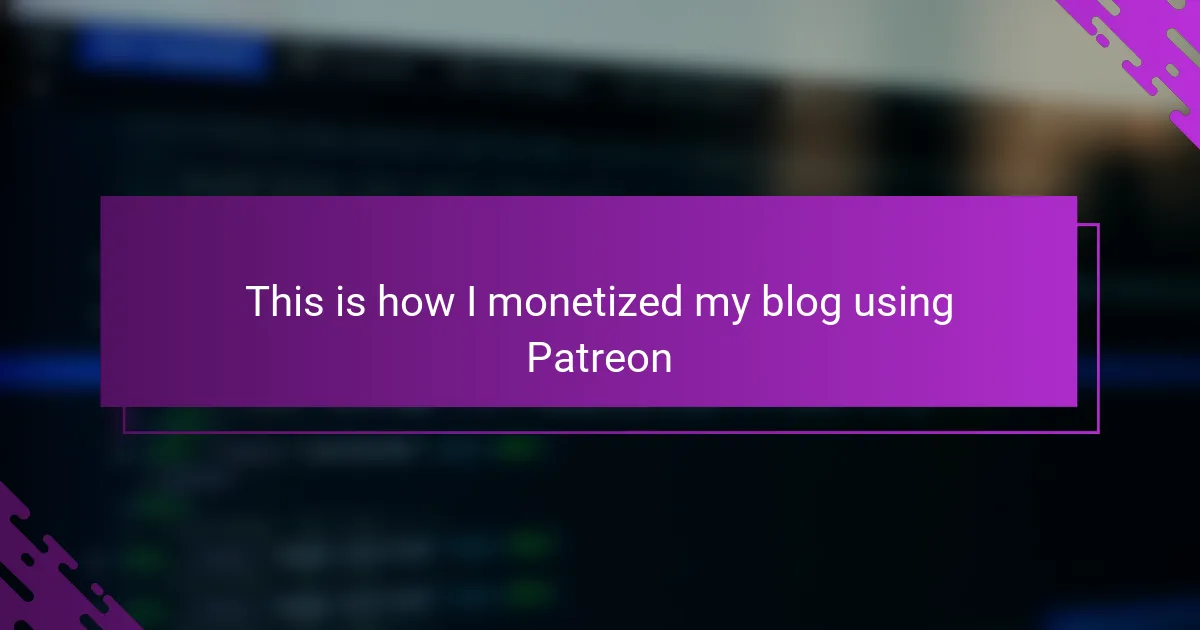Key takeaways
- Patreon provides a sustainable income for creators by allowing fans to directly support their work through membership tiers offering exclusive perks.
- Building a community and deepening connections with readers is essential for monetization and engagement on the platform.
- Effective promotion of Patreon should feel natural, integrated into content, and avoid being overly sales-focused.
- Tracking success through data analysis helps creators optimize rewards and understand patron preferences for better engagement and income growth.
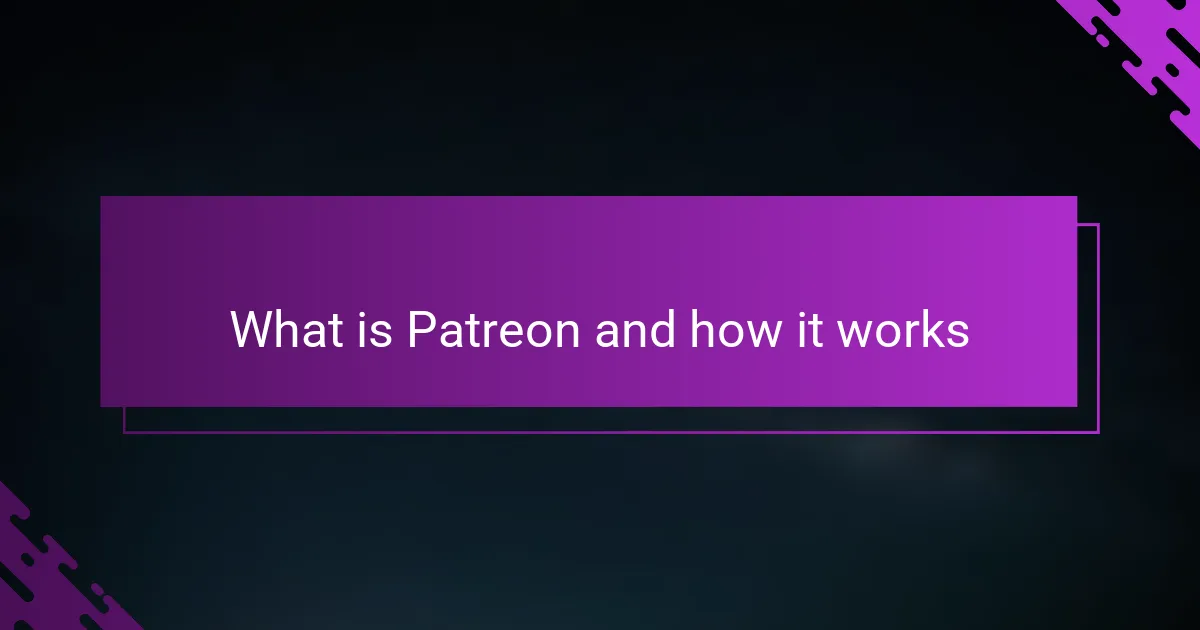
What is Patreon and how it works
Patreon is a platform that allows creators like me to receive ongoing financial support directly from fans. Instead of relying on inconsistent ad revenue, I get pledges—usually monthly—from people who genuinely appreciate my work. It feels rewarding knowing that my audience values what I create enough to invest in it.
How does it work? Creators set up a page and offer different “tiers” or membership levels, each with its own perks. For example, I provide exclusive content and early access to posts for my patrons. It’s a simple exchange: they support me, and I give them something special in return.
I remember wondering at first, “Will people even pay for this?” But the idea of building a community that truly connects with my work was exciting. Patreon transformed my blogging journey by making it more sustainable and personal. Have you considered how direct support could change your creative path?
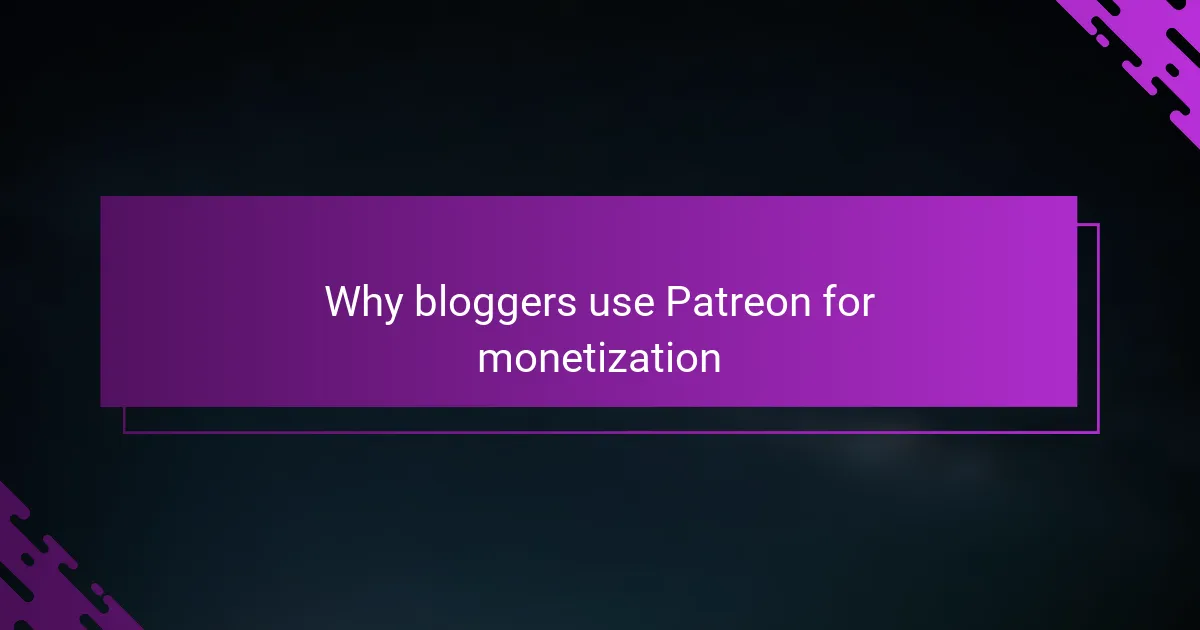
Why bloggers use Patreon for monetization
Many bloggers turn to Patreon because it bridges the gap between passion and profit. From my experience, relying solely on ads felt unstable, but Patreon gives me a steady income stream tied directly to the people who actually care about my content.
What really drew me in was the chance to foster a deeper connection with my readers. Have you ever wanted to create a space where your audience feels like part of your journey? Patreon lets you do just that, turning casual visitors into a loyal community that supports your creative goals.
I also appreciate the flexibility Patreon offers. It’s not just about money—it’s about rewarding your audience with something meaningful. Offering exclusive posts or behind-the-scenes glimpses makes the whole process feel genuine and personal, which made all the difference in enjoying my blogging work again.
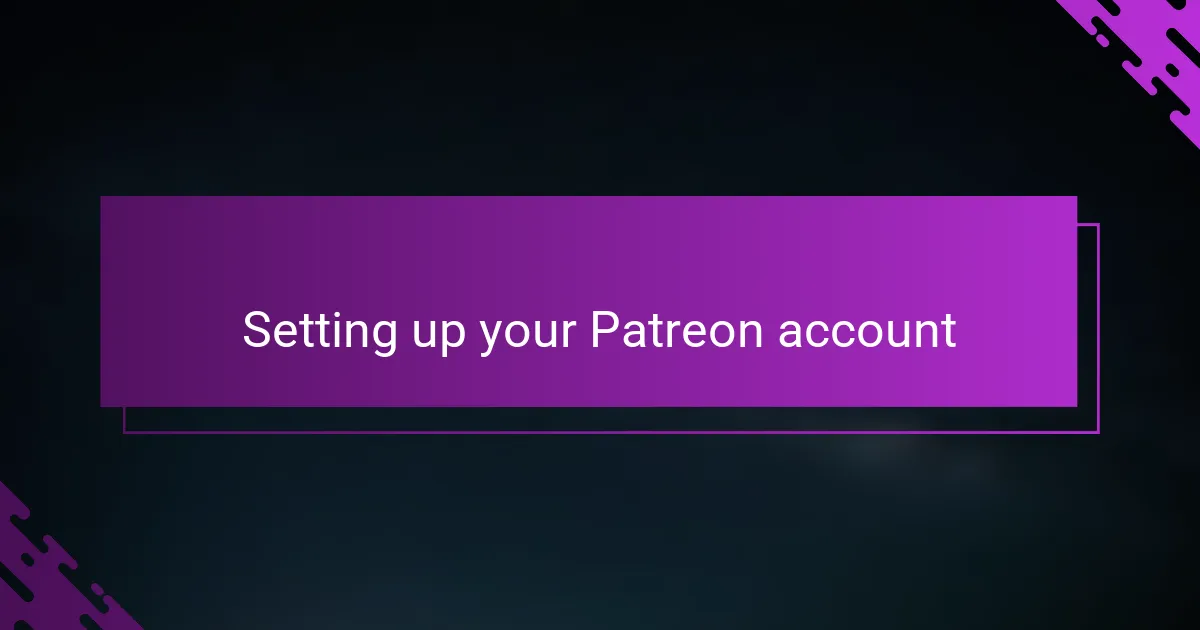
Setting up your Patreon account
Setting up my Patreon account was surprisingly straightforward, but I didn’t rush through it. I took time to craft a clear bio that explained why I blog and why support mattered to me personally. Asking myself, “What would make me want to support someone?” helped me shape a message that felt authentic and inviting.
Choosing the right membership tiers was a bit tricky at first. I wanted to offer perks that felt special without overwhelming myself—early access to posts and exclusive Q&A sessions seemed doable and appreciated by my patrons. Have you thought about what kind of rewards align with your style and what you can consistently deliver?
Linking Patreon to my blog felt like connecting two parts of my creative world. I made sure to add visible Patreon buttons and mention it naturally within my posts, so readers didn’t feel like it was a hard sell. This subtle approach allowed support to grow organically, which made me feel more confident about inviting my audience on this new path.
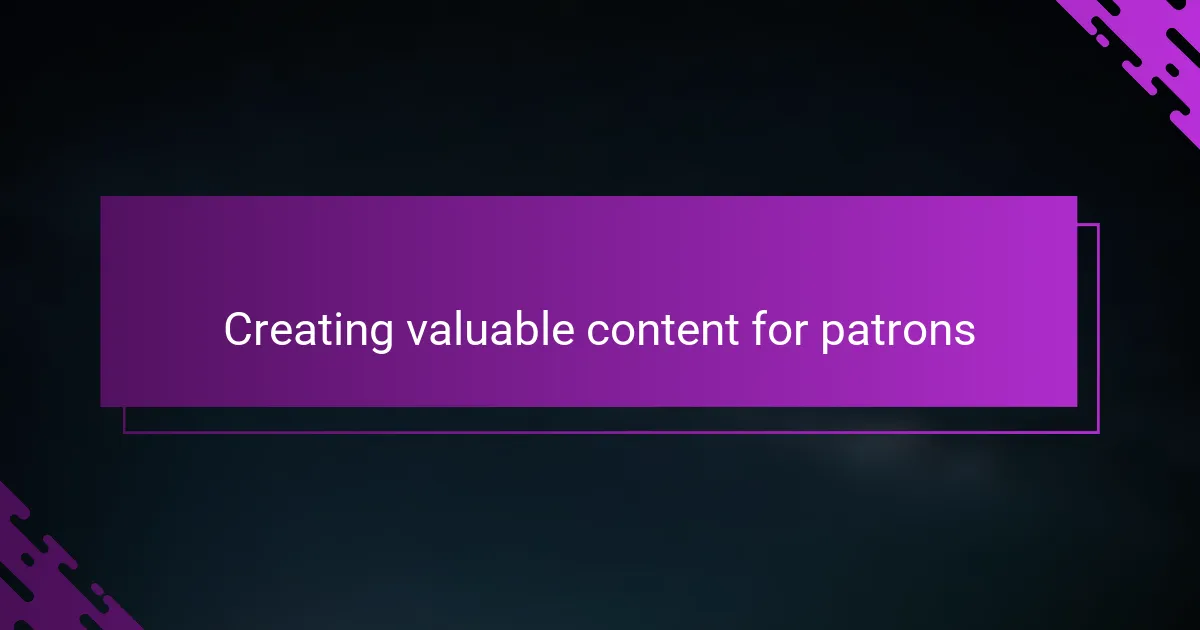
Creating valuable content for patrons
Creating valuable content for patrons means going beyond what I share publicly. I learned early on that patrons want to feel special—like they’re getting insider access or something extra that deepens their connection to my blog. For me, this meant offering behind-the-scenes stories and early drafts of my posts, which made supporters feel like true collaborators rather than just readers.
Sometimes, I ask myself, “What would make me excited enough to pledge to someone else’s work?” That question helped me design content that felt authentic and rewarding. It’s not about quantity but quality—giving patrons content that answers their curiosity or inspires them in a way public posts can’t.
Creating this content also taught me discipline and creativity. Knowing I had a dedicated audience waiting motivated me to consistently produce thoughtful, meaningful pieces. It’s like having a group of cheerleaders who keep me inspired and accountable—something I didn’t expect but deeply appreciate.
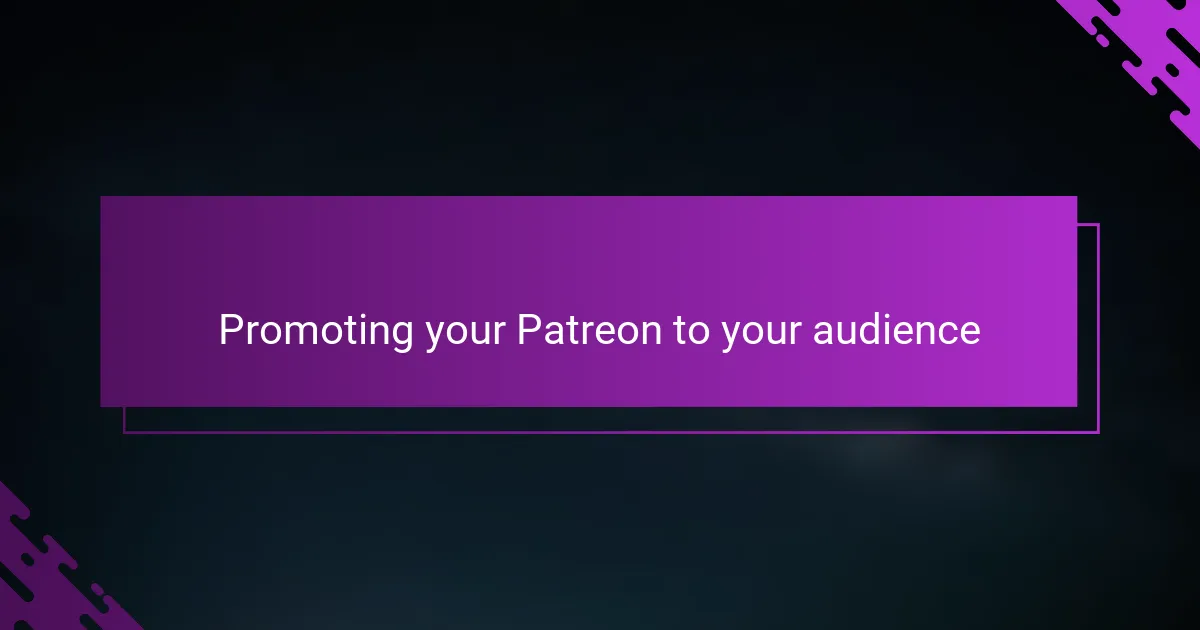
Promoting your Patreon to your audience
Promoting my Patreon felt like walking a fine line between enthusiasm and pressure. I remember hesitating to mention it too much at first, worried I might annoy my readers. But then I realized that sharing my passion and the reasons behind my Patreon made the invitation feel genuine, not pushy.
One trick that really worked for me was weaving mentions of Patreon naturally into my blog posts, like talking about an exclusive behind-the-scenes post or a sneak peek available only to patrons. It made the promotion part of the story rather than a sudden sales pitch, which seemed to spark curiosity rather than resistance.
Have you tried using multiple channels to spread the word? I found that sharing my Patreon on social media, in my newsletter, and even at the end of videos created several gentle touchpoints for my audience. Each mention felt like a small nudge, and combined, they built a steady flow of supporters without overwhelming anyone.
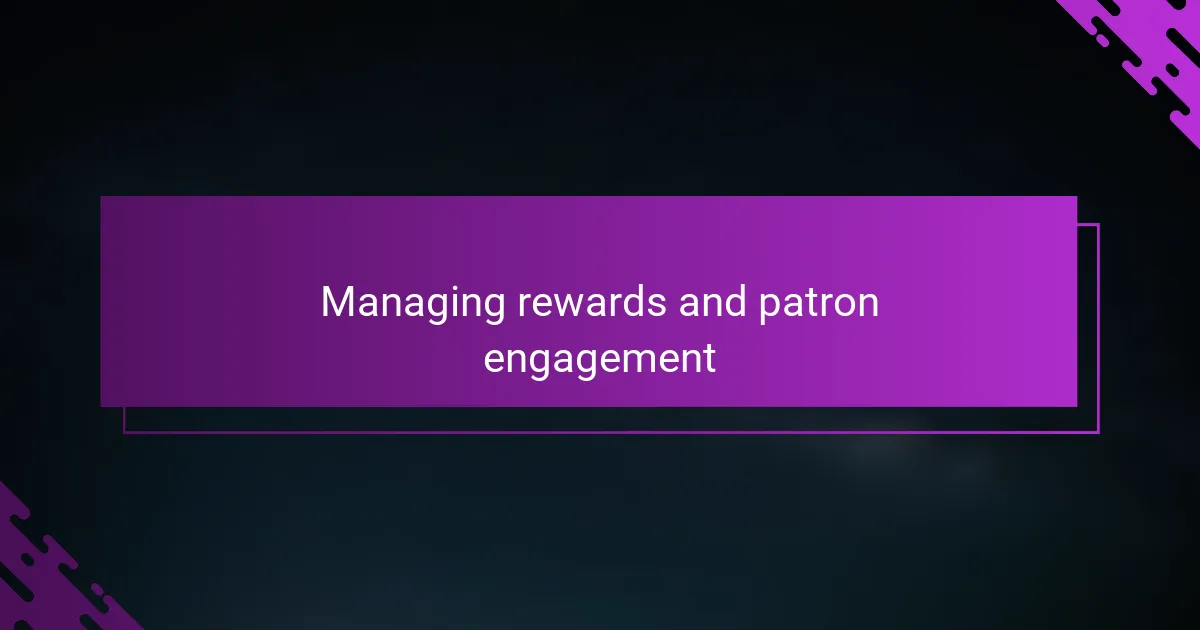
Managing rewards and patron engagement
Engaging with patrons means more than just sending rewards on time; it’s about building a relationship that feels rewarding for both sides. I found that responding promptly to messages and asking for their input on future perks made my patrons feel genuinely heard and valued. Have you noticed how a simple “thank you” or a quick reply can deepen someone’s connection to your work?
Managing rewards can get tricky, especially when your community starts to grow. Early on, I learned the hard way that overpromising leads to burnout—so I kept tiers manageable and realistic. Offering exclusive content like monthly Q&A sessions or digital downloads gave me a sustainable way to keep patrons excited without stretching myself too thin.
Keeping things fresh is key to ongoing engagement. Sometimes, I ask myself, “What little surprise could make a patron’s day?” Whether it’s a shout-out in a post or an unexpected bonus piece, these small gestures go a long way. They remind me—and my supporters—that this is a shared journey, not just a transaction.
![]()
Tracking success and optimizing Patreon income
Tracking my Patreon success has been surprising and insightful. I started by regularly checking my Patreon dashboard to monitor which tiers attracted the most supporters and which rewards generated the best feedback. Have you ever wondered if your patrons truly value certain perks over others? This data helped me tailor my offerings more effectively.
I also use simple tools like spreadsheets to track monthly income trends alongside content releases. Noticing a spike in patron sign-ups after a special post made me realize how timing and exclusivity play critical roles. From what I’ve seen, consistent analysis isn’t just about numbers—it’s about understanding your community’s desires and adjusting accordingly.
Optimizing income on Patreon is an ongoing process. I ask myself, “What can I improve to keep patrons engaged and attract new ones?” Sometimes it’s refining reward descriptions, other times it’s experimenting with limited-time bonuses. Small tweaks, driven by attentive tracking, have made a big difference in turning casual supporters into passionate patrons.
